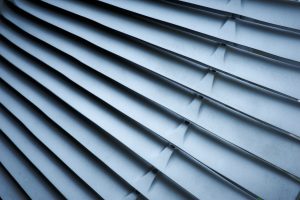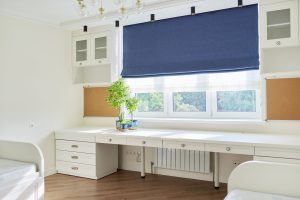Before selecting tier-on-tier shutters, consider their dual-panel functionality for superior light control and privacy. Evaluate the aesthetics—this style offers elegance adaptable to modern and traditional interiors. Determine the right shutter material, each providing unique benefits and maintenance requirements. Ponder installation: a professional guarantees precise fit but DIY can save money. Finally, examine shutter suppliers for quality and service. With all these factors in mind, you’re better prepared for a decision. Keep exploring to uncover nuances like cost considerations, specific maintenance requirements, and more on the pros and cons of professional installation.
Key Takeaways
– Understand the functionality and aesthetics of tier-on-tier shutters, including their light control and privacy features.
– Compare shutter materials like wood, vinyl, and composite for durability and energy efficiency.
– Consider maintenance, durability aspects, and warranty coverage when choosing shutters.
– Factor in cost considerations, including financing options, energy savings, and the impact of material and quality on price.
– Evaluate shutter suppliers based on reputation, product range, warranty policies, and quality of services.
Understanding Tier-on-Tier Shutters
To fully understand the concept of tier-on-tier shutters, it’s essential to grasp that they’re a type of window covering that features two sets of panels, one above the other, which can be operated independently for enhanced light control and privacy. This shutter functionality allows you to adjust the top and bottom panels separately, thereby providing flexibility for both natural light entry and personal privacy.
However, the installation challenges that come with tier-on-tier shutters shouldn’t be overlooked. This type of shutter requires precise measurements and fitting, which is why it’s often best left to professionals. The complexity of the two-tier system also means that these shutters are heavier than their single-tier counterparts. Hence, it’s important to make sure that your windows can withstand the additional weight.
Furthermore, due to their complex mechanisms, tier-on-tier shutters may require more maintenance to keep them running smoothly. Regular cleaning and periodic checks of the moving parts are necessary to prevent issues down the line.
Aesthetics of Tier-on-Tier Shutters
Beyond the functionality and installation considerations, you’ll find that the visual appeal of tier-on-tier shutters is equally remarkable. These shutters offer a timeless elegance that can enhance both modern and traditional interiors.
The aesthetics of these shutters are largely influenced by the ‘Shutter Color Choices’ available. You can choose from a wide range of colours, from classic white to bold blacks, or even custom colours to match your interior decor. The choice of colour can dramatically change the ambiance of your room, making it feel cosy, luxurious, or vibrant.
The ‘Historical Significance’ of tier-on-tier shutters also adds to their aesthetic appeal. Originating from the Victorian era, these shutters have maintained their charm and elegance over the centuries, providing a touch of historical charm to any home.
The aesthetic considerations for these shutters include:
– Your available ‘Shutter Color Choices’ and how they complement your existing decor
– The ‘Historical Significance’ of these shutters and how it can add a layer of sophistication to your home
– The overall visual impact of the shutters, taking into account their design, size, and placement
Light Control and Privacy Features
Offering more than just aesthetic appeal, tier-on-tier shutters also provide exceptional light control and privacy features for your home. These shutters are designed with two independent panels stacked on top of each other, allowing you to open and close the top and bottom halves separately. This offers you the flexibility to control how much light enters your room at different times of the day.
Shutter customization is a key aspect of tier-on-tier shutters. You can customise the size, colour, and style of your shutters to match your interior décor. More importantly, you can adjust the louvres to control the amount of light filtering into your space and to maintain privacy.
In addition, tier-on-tier shutters can come with blackout capabilities. This means they can completely block out light, making them perfect for bedrooms and home theatres where total darkness is often required. With these shutters, you’re not only enhancing your home’s aesthetic but also increasing its functionality.
Comparing Shutter Materials
When it comes to selecting the appropriate tier-on-tier shutters for your home, it’s important to evaluate the various materials available and how they impact the shutter’s durability, functionality, and aesthetic appeal.
You should consider material sustainability – how the shutter materials are sourced and if they’re eco-friendly. This is vital because sustainable materials not only impact the environment less but also tend to be of high quality, enhancing the durability of your shutters.
Another important aspect is shutter insulation. The material of your shutters greatly influences their insulation properties – the ability to maintain your home’s temperature, reducing energy consumption. Some materials provide better insulation than others, affecting your overall energy costs.
To guide your decision, let’s look at common shutter materials:
– Wood: Traditional and versatile, wood offers an aesthetic appeal that’s hard to beat. However, it requires regular maintenance and may not be the most sustainable option.
– Vinyl: Vinyl is a cost-effective, low-maintenance material with good insulation properties. However, it may be lacking in the aesthetic department.
– Composite: This material offers a balance, being more durable and sustainable than wood and more attractive than vinyl. It also provides excellent insulation.
Choosing the right material involves balancing these considerations to meet your specific needs.
Maintenance and Durability Aspects
Understanding the maintenance and durability aspects of your chosen shutters is crucial to ensuring they retain their functionality and appeal over time. Tier-on-tier shutters, renowned for their versatility, aren’t exempt from this fact.
Take note of the recommended cleaning methods for these shutters. Regular dusting with a soft cloth or vacuuming with a brush attachment should keep them looking fresh. However, depending on the material, deeper cleaning might involve a damp cloth or specific cleaning products. Always refer to the manufacturer’s guidelines to prevent any accidental damage.
Remember, the durability of your shutters isn’t just about the material. It also involves the quality of the construction and installation. Scrutinise the joints, hinges, and other hardware for robustness. High-quality shutters should operate smoothly and stand up to regular use without issues.
Before making a purchase, check the warranty coverage. A good warranty can offer peace of mind, covering potential defects in material or workmanship. Some companies even provide extended warranties for an additional cost.
Cost Considerations
Beyond the durability and maintenance, it’s equally important to contemplate the cost implications of your decision to invest in tier-on-tier shutters. You’ll want to factor in the initial cost of the shutters, including any possible shutter financing options, as well as the long-term savings associated with energy efficiency.
Here are a few cost considerations to keep in mind:
– Shutter Financing: Depending on your budget, you may need to explore financing options. Some suppliers offer payment plans to make the investment more manageable. Remember to read the terms carefully to avoid hidden charges.
– Energy Efficiency: Tier-on-tier shutters are known for their energy-saving benefits. They provide excellent insulation, reducing heating and cooling costs over time. It’s an upfront investment that can lead to significant savings in the long run.
– Material and Quality: The price of shutters varies widely depending on the material and quality. While it might be tempting to opt for cheaper options, remember that high-quality shutters will last longer and offer better value for money.
Professional Installation Vs DIY
Deciding between a professional installation and a DIY project for your tier-on-tier shutters is a crucial step in the process, with each option offering its own advantages and drawbacks. Understanding the installation process can help you make an informed decision.
Opting for professional installation guarantees your shutters are properly fitted and installed. Professionals have the necessary tools, expertise, and experience to handle any complexities that may arise. They can identify potential issues and rectify them before they become costly problems. This option can save you time and stress, but it will come at an additional cost.
On the other hand, a DIY project can save you money if you’re confident in your handy skills. However, it’s essential to understand the DIY risks involved. You could end up damaging the shutters, or worse, your windows, if you’re not careful. Additionally, the process can be time-consuming and require a steep learning curve if you’re not familiar with it.
Ultimately, the choice between professional installation and DIY depends on your budget, skill level, and comfort with the installation process. Take time to weigh your options and make the right decision for your needs.
Evaluating Shutter Suppliers
When picking your tier-on-tier shutters, it’s important to evaluate different shutter suppliers to make sure they offer high-quality products and reliable services. Here are key factors that you need to assess:
– Supplier reputation: It’s essential to delve into the reputation of potential suppliers. Look for customer reviews, ratings, and any awards or accolades they might’ve received. A well-established supplier with a positive reputation is likely to deliver quality shutters and service.
– Product range: Choose a supplier with a diverse range of products. This will give you more options to select the perfect shutters that suit your style and functional needs.
– Warranty policies: A good supplier will stand by their products with strong warranty policies. Check the duration and terms of the warranty. It should cover both the shutters and the installation service.
Frequently Asked Questions
What Are Some Common Issues Homeowners Might Face With Tier-On-Tier Shutters?
You might encounter shutter maintenance issues like warping or fading. Installation challenges can also arise, such as incorrect measurements leading to a poor fit. It’s crucial to bear in mind these potential problems before making a purchase.
How Do Tier-On-Tier Shutters Handle Extreme Weather Conditions?
When evaluating the durability of tier-on-tier shutters, consider extreme weather conditions. They’re usually crafted with weather-resistant materials, so they’ll withstand rain, wind, and sun. You’ll need shutters that can endure all weather extremes.
Can Tier-On-Tier Shutters Be Customised to Fit Irregularly Shaped Windows?
Absolutely, you can customise tier-on-tier shutters to fit irregularly shaped windows. With the design versatility and a wide range of shutter material choices, you’ll find it easy to match any unique window shape.
Are There Any Additional Features or Accessories That Can Be Added to Tier-On-Tier Shutters for Enhanced Functionality?
Yes, there are. You can add shutter automation for convenience and choose from various colour options to complement your decor. It’s important to take into account these features for improved functionality of your tier-on-tier shutters.
Do Tier-On-Tier Shutters Provide Any Benefits in Terms of Energy Efficiency?
Tier-on-tier shutters greatly enhance energy efficiency. They’re like a superhero for your windows, hugely reducing heat loss. While shutter durability and installation costs might vary, the energy savings you’ll gain are worth considering.
Conclusion
So, you’ve trudged through the world of shutters and emerged, hopefully, a bit wiser. Remember, tier-on-tier shutters aren’t just a pretty face – they’re about light control, privacy, durability, and yes, your wallet too.
Whether you’re a DIY enthusiast or prefer pro-installation, choose your shutter supplier wisely. After all, you wouldn’t want your shutters to let you down or, heaven forbid, drop in unexpectedly!
















